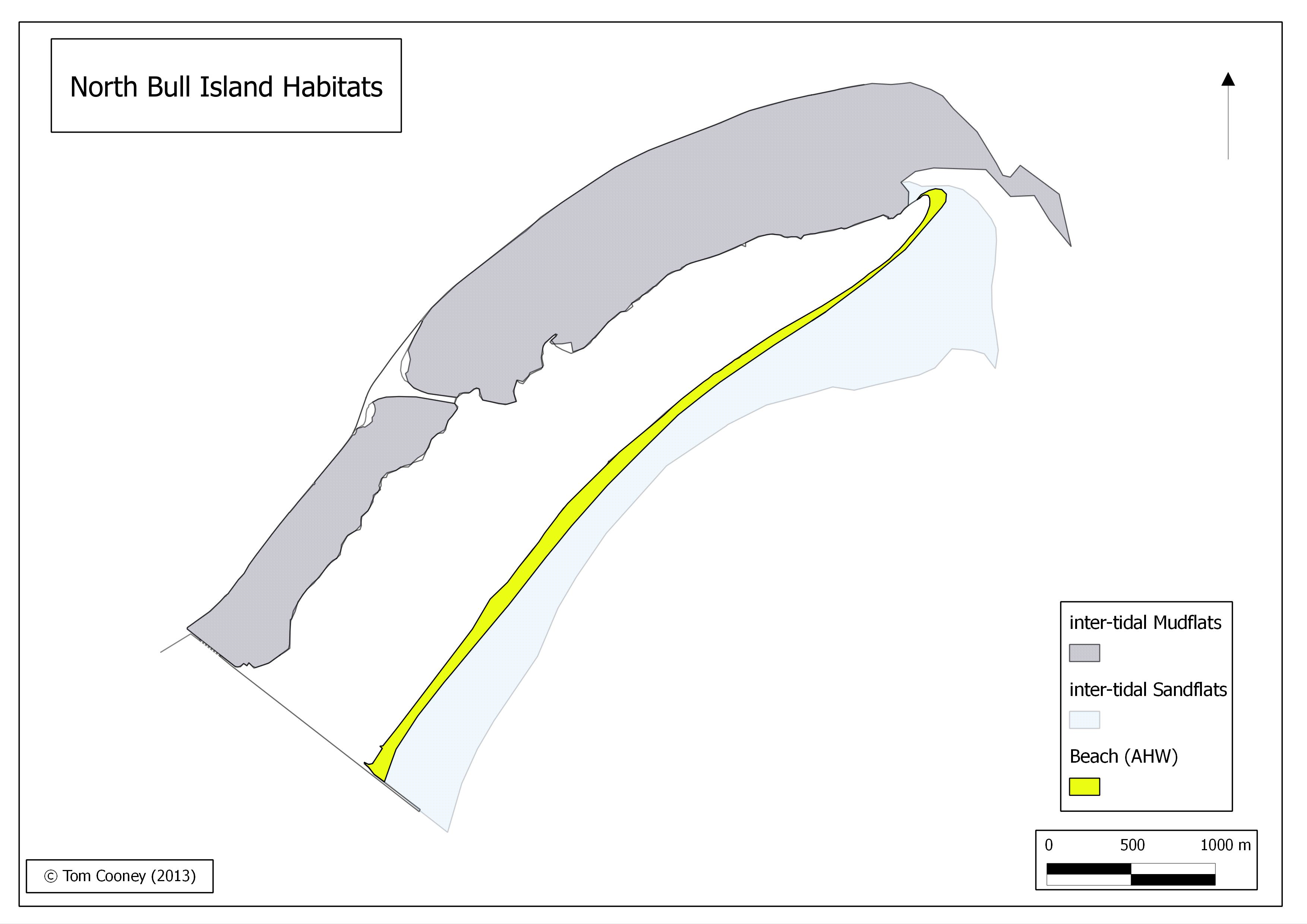|
|
|
|
| | |
Mudflats and Sandflats

The construction of a road causeway connecting the mainland to the island in 1962-64 divided the mudflats into two distinct areas. The largest mudflat is on the northern side and receives seawater via Sutton Creek. The incoming tides enter the smaller southern mudflats under the Bull Bridge from Dublin Port.
The mudflats attract in excess of 30,000 birds between late summer (July) and early spring (March). The vast majority of these are waders such as dunlin, knot, bar-tailed godwit, black-tailed godwit, curlew, oystercatchers, redshank, grey plover and golden plover. Smaller numbers of greenshank, lapwing, grey heron and little egrets also occur.
During the summer months common, arctic and sandwich terns feed around the island and in the lagoons at high water. Occasionally the rare roseate tern can be found roosting near on the nortern end of the island in late summer/autumn. A large little tern colony existed at the most northerly point on the island up the late 1980s.
In autumn little stint, curlew sandpiper, ruff and spotted redshank occur in small numbers on their southern migrations. Rare and scarce species from Europe and North America such as buff-breasted sandpiper and black tern occur occasionally during autumn migration.
The most obvious wildfowl are the pale-bellied brent goose and shelduck but teal and wigeon are also quite common. Small and ever decreasing numbers of pintail and shoveler can been seen at close rane from the mainland at low water. Mallard and shelduck nest on the island annually. Mute swans can be seen in small numbers in autumn and occasionally at other times in the year. Other wildfowl species are uncommon or rare.
The easiest way to see wildfowl without causing disturbance is to watch from the mainland side of the lagoons at low water. A coastal footpath runs alongside the mudflats from the wooden bridge at Dollymount up to near Sutton Cross. For high numbers of waders visit the coastal path or the causeway about one or two hours before and after high tide. Feeding birds are pushed very close to the causeway by the incoming tide and excellent views can be had without causing any disturbance. |
|
|
| |
|
|
www.bullislandbirds.com
Birds of North Bull Island - Dublin Bay (2024) All Rights Reserved.
|
| [Login] |